Entering a Purchase Invoice - VAT Examples
This section contains some examples illustrating the handling of VAT in Purchase Invoices. The examples assume the use of standard VAT Codes that do not have Tax Rules specified on flip B of the
VAT Codes setting in the Nominal Ledger.
The calculation of VAT in a Purchase Invoice depends on its VAT Zone, which in turn depends on the VAT Zone specified for the Supplier in the Contact register. When you specify the Supplier in a Purchase Invoice, the VAT Zone will be set accordingly, and will be visible on the 'Inv. Address' card:
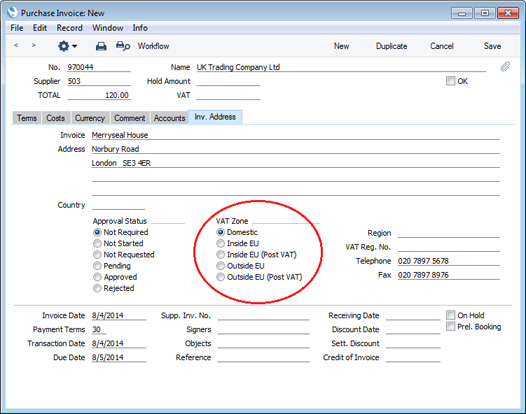
When you add a row to a Purchase Invoice and specify an Account, the VAT Code in that row will be chosen as follows:
- The Purch. VAT Code for the Supplier will be used.
- It will be taken from the Account record.
- The VAT Code on the 'VAT' card of the Account Usage P/L setting will be used.
In the last case, the appropriate VAT Code for the Zone of the Supplier will be used.
You can change this default in a particular Invoice row if necessary.
Depending on the VAT Zone, the VAT Code in a particular row will determine the rate at which VAT will be charged in that row and the Input VAT Account that will be debited.
Domestic, Inside EU (Post VAT) and Outside EU (Post VAT) VAT Zones
- In a Purchase Invoice in the Domestic, Inside EU (Post VAT) or Outside EU (Post VAT) VAT Zones, when you enter the Amount in a row, the Calculated VAT field in the footer will be updated automatically. In the example shown below, the VAT Rate for VAT Code 1 is 20%:
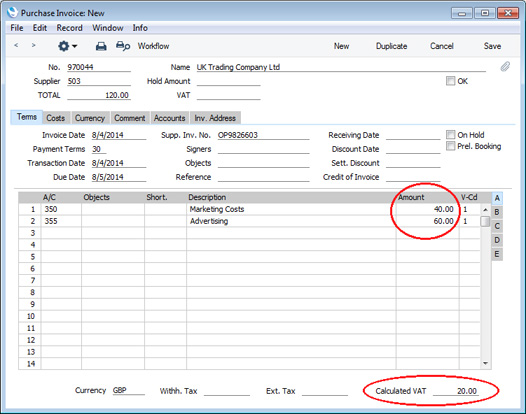
In this simple example, the same VAT Code has been used in each row. When you mark the Purchase Invoice as OK and save it, the Calculated VAT amount will be posted to the Input VAT Account for the VAT Code (Account 831 in this example):
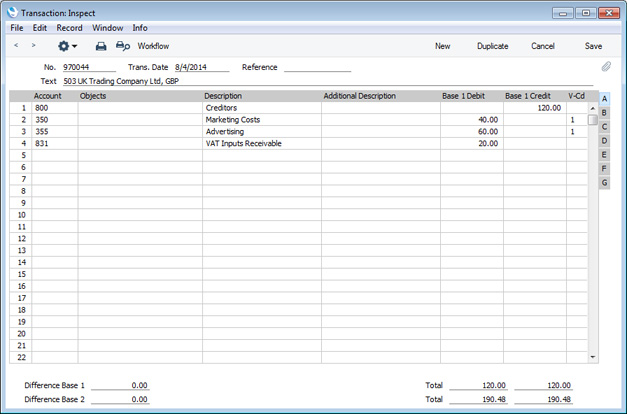
- Occasionally, the Calculated VAT figure may be such that the Purchase Invoice doesn't balance and so can't be saved. This may be due to rounding (as in the example illustrated below) or, more rarely, due to an error in calculation by the Supplier.
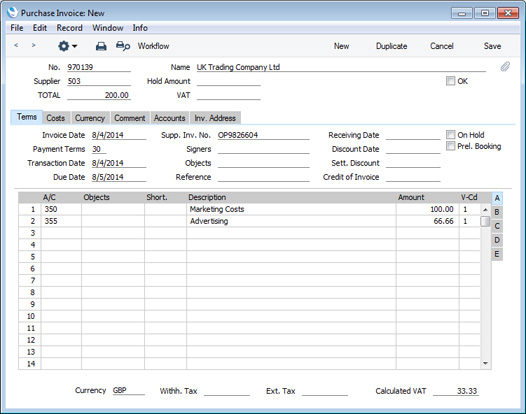
The Invoice does not balance because the TOTAL is 200.00, but the sum of the Amounts in the rows plus VAT is 199.99 (100.00 + 66.66 + 33.33). In this situation, enter the VAT value charged by the Supplier in the VAT field in the header:
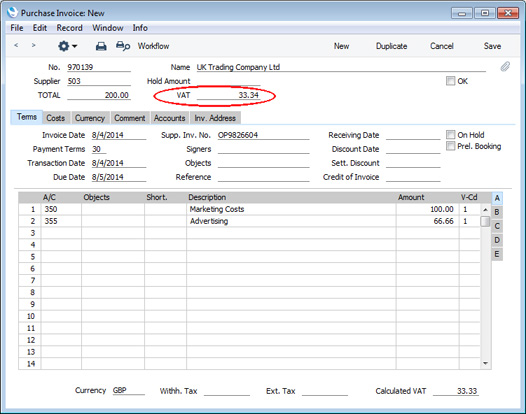
When you mark the Purchase Invoice as OK and save it, the VAT figure from the header will be posted to the Input VAT Account for the VAT Code (again, Account 831):
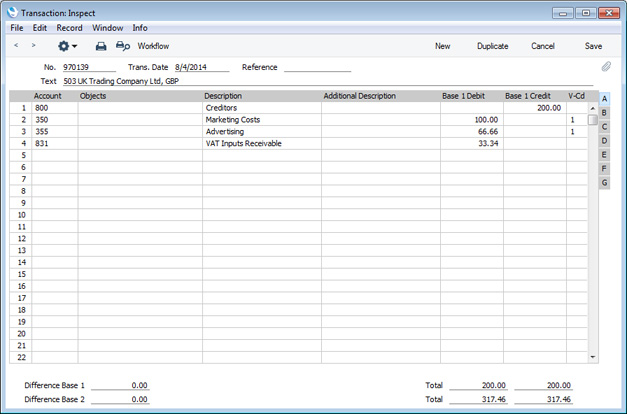
- If you use several VAT Codes posting to different Input VAT Accounts, the procedure for entering Purchase Invoices will be unchanged. In the example shown below, the VAT Rate for VAT Code 2 is again 20%:
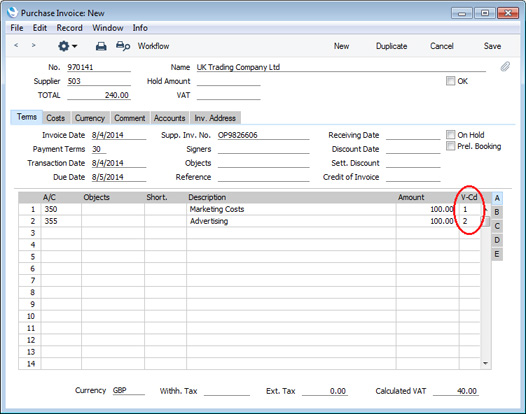
As the VAT Codes post to different Input VAT Accounts, the Calculated VAT figure cannot be used in the postings as it is an accumulated total. Instead, a VAT amount will be calculated for each VAT Code and posted to each Input VAT Account:
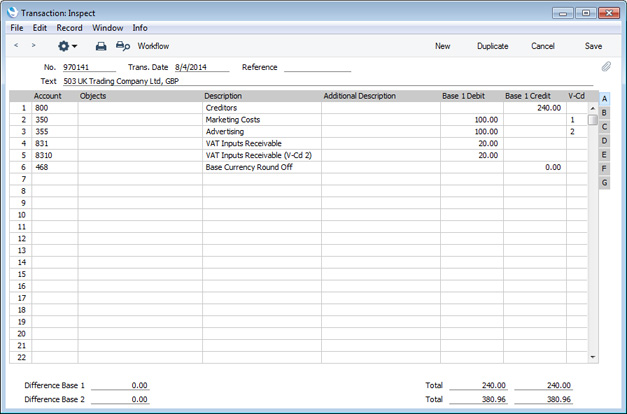
- If a Purchase Invoice with several VAT Codes doesn't balance, you can again enter the correct VAT total in the VAT field in the header, so that the Purchase Invoice balances:
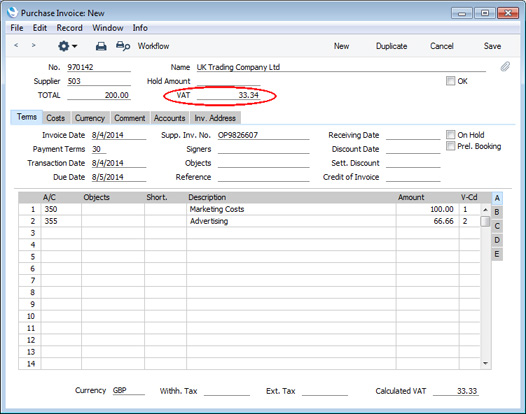
The difference between the Calculated VAT figure and the figure in the VAT field in the header will be added to the posting to the first Input VAT Account (Account 831 in this example):
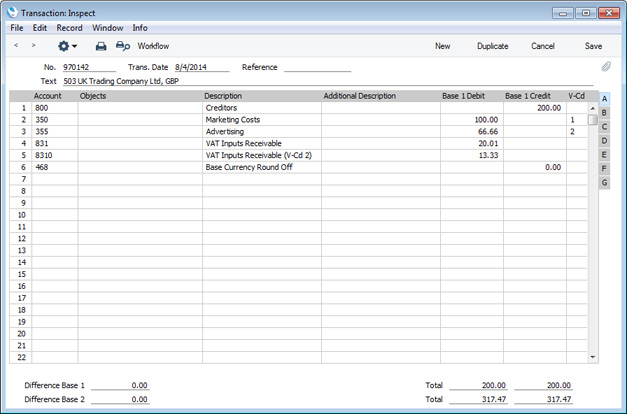
- If you need to specify more precisely where the difference will be posted, first make sure you are using the Set VAT Value on Purchase Invoice option on the 'VAT' card of the Account Usage P/L setting:
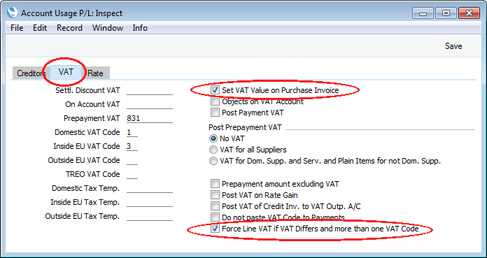
This will allow you to specify the VAT amounts individually in each Purchase Invoice row. You may also want to use the Force Line VAT if VAT Differs and more than one VAT Code option in the same setting. This will mean that you will have to specify VAT amounts individually in each Purchase Invoice row if a Purchase Invoice has more than one VAT Code.
Now you can enter the exact VAT amounts on flip C of each Purchase Invoice row. As you do so, the VAT figure in the header will be updated automatically:
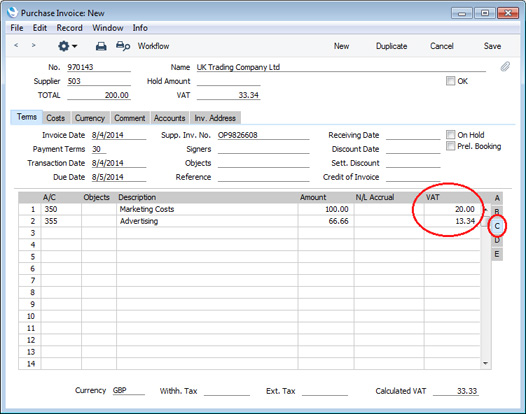
The VAT amounts that you specify on flip C will be posted to the corresponding Input VAT Accounts:
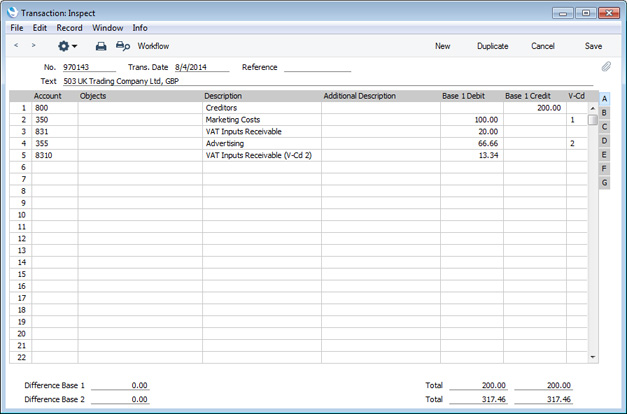
Inside EU VAT Zone
When purchasing Items from other countries in the EU, you will not pay VAT to the Suppliers but you need to pay VAT at the domestic rate that would apply had you purchased the Items from local Suppliers. This is known as Acquisition VAT. You can reclaim this VAT, if the acquisitions relate to VAT taxable supplies that you make. One method for handling Acquisition VAT is described below. Please refer to the description of the 'Create Internal Invoice' function for an alternative.
- In the VAT Codes setting in the Nominal Ledger, create a VAT Code for VAT on EU Acquisitions. VAT will be debited to the Input Account in this VAT Code and credited to the Output Account. It is recommended that you use an Output Account that is not used in any other VAT Code (VAT Code 3 in the example below):
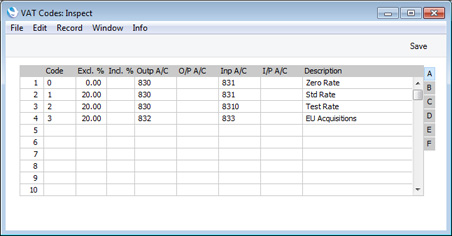
- In a Purchase Invoice in the Inside EU VAT Zone, enter the total charged by the Supplier (i.e. without VAT) in the TOTAL field and the Amounts in the rows using the VAT Code from step 1. The Calculated VAT field in the footer will be updated automatically. In this example, the Currency in the Invoice is the Euro:
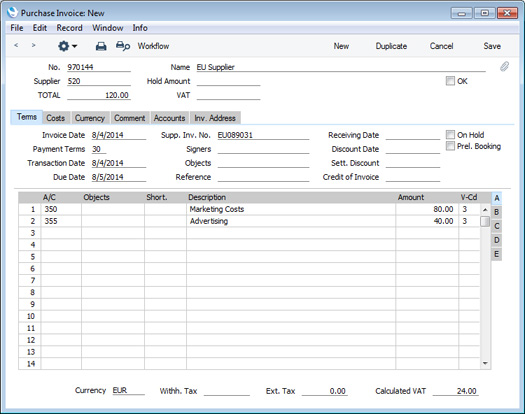
- When you mark the Purchase Invoice as OK and save it, the total charged by the Supplier will be posted to the Creditor Account. VAT will be debited to the Input Account of the selected VAT Code and credited to the Output Account (EUR figures are shown in the Base 2 Debit and Credit fields, with figures in Base Currency 1 in the Base 1 Debit and Credit fields):
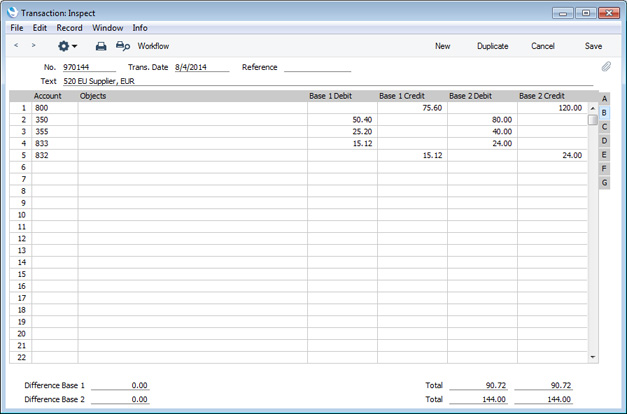
If you need to use the reverse charge procedure described above with Suppliers in the Domestic or Outside EU VAT Zones, please refer to the 'Example - Reverse Charge VAT' section on the
Example VAT Report Definitions page.
---
In this chapter:
Download:
Go back to:
